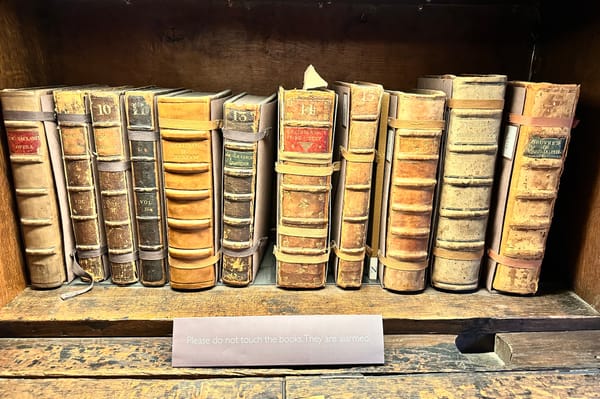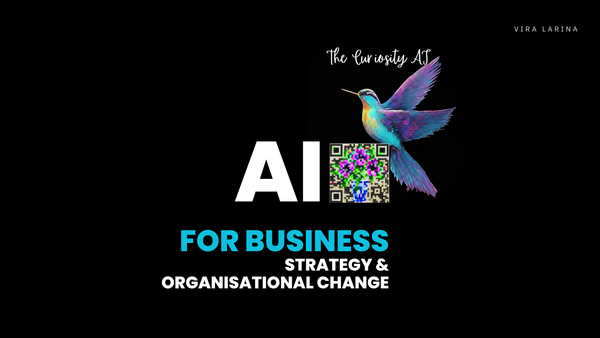EN: From Ant Trails to Artificial Intelligence
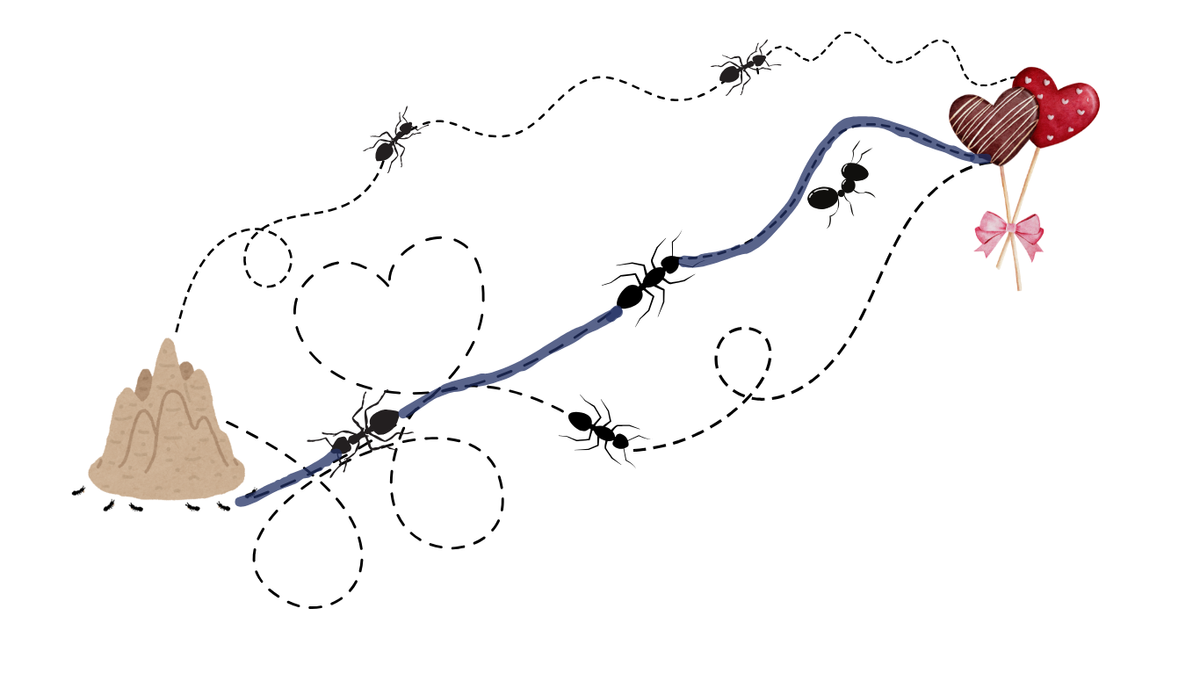
While we're still finding chocolate boxes from Valentine's Day celebrations, let's explore how nature's language - chemical signals called pheromones - connects the fascinating worlds of insects and artificial intelligence. Are you curious about how pheromones, ants, and AI can appear in one sentence? No, it's not a hallucination - facts invented by Generative AI. The humble pheromone, often associated with the attraction between living beings, is also associated with Ant Colony Optimisation (ACO) algorithms used in computer science.
Happy Ants Families
Ants live in big, happy families – colonies. They love socialising and don't mind communicating. When they explore routes to food, they deposit pheromones along the way. Upon finding food, they return home, marking their path with these chemical signals. The shorter the route between food and home, the more pheromone gets deposited (because more ants can travel back and forth on it!), so the following ants don't need to start from scratch – they can follow these pheromone trails to optimise their routes. The pheromone, deposited on longer routes, which later became unpopular - evaporated. Lovely! Intelligent ants find the best path to food, and now the whole family can use this optimal way, making their colony's food delivery system super-efficient! It's just like finding the quickest route from home to Tesco and back, or Marks & Spencer if you fancy something special.
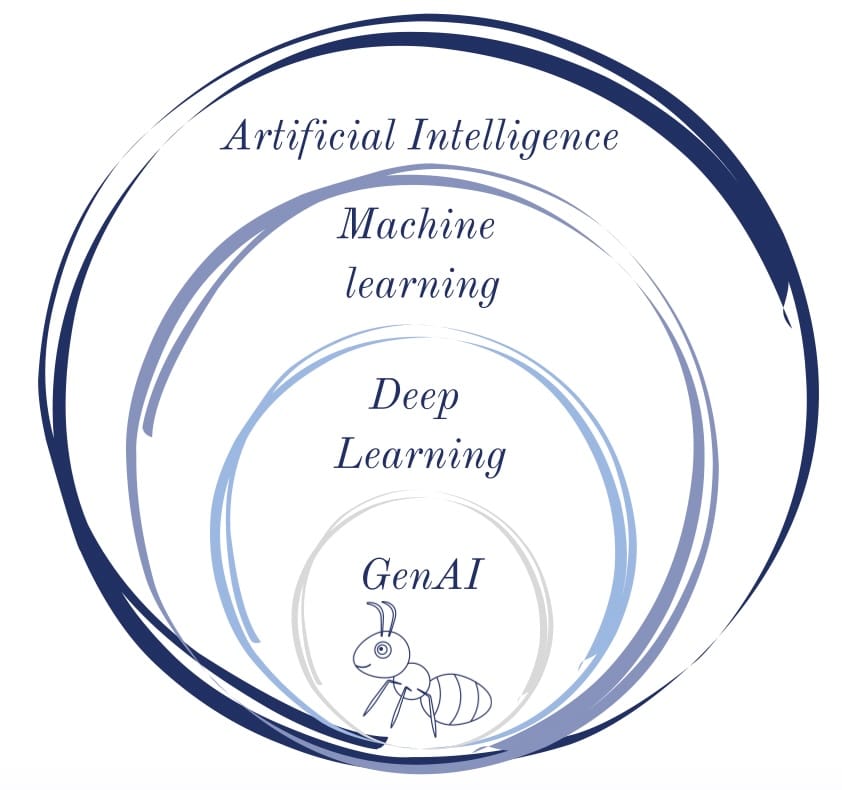
While ants use chemical signals to build their collective colony intelligence, AI has evolved into its own family - a family of innovative technologies. At the broadest level, AI describes systems that can perform tasks that typically require human intelligence. Within AI lives machine learning, which enables systems to learn patterns and make decisions from data rather than following pre-programmed rules. Deep Learning is an even more specialised branch, using digital brain-like networks to spot patterns. At the very heart sits Generative AI, the newest family member that can create new content, from text to images.
Metaheuristics help to find the optimal way
This beautiful parallel between nature and technology took shape when Researcher Marco Dorigo developed an Ant Colony Optimisation algorithm in the 1990s. This metaheuristic technique provides a framework to find near-optimal solutions for optimisation problems. Ants' problem is finding the optimal, good-enough route to the food, and their decision-making is based on the pheromone trail. The collective intelligence of the ant colony offers an accessible way to understand basic concepts in AI, like optimisation and pattern recognition. Large language models, which use neural networks and attention mechanisms, operate on different principles, but both ants and AI systems rely on the same core idea: individual agents—whether ants or model parameters—work together to solve complex problems.
In the ant colony algorithm, artificial ants use a "digital pheromone" to mark promising paths, similar to leaving breadcrumbs on a trail. Language models rely on finding optimal paths or relationships between words. They represent words in a mathematical space called a vector space, where words are positioned based on how they're used in the training data. The model calculates probabilities based on these mathematical relationships when predicting the next word. So, the model calculates higher probabilities for word combinations that appear together meaningfully in its training data, much like how "salt" and "pepper" feel naturally related in your mind while "salt" and "telescope" don't.
Now look again at the ants' path:
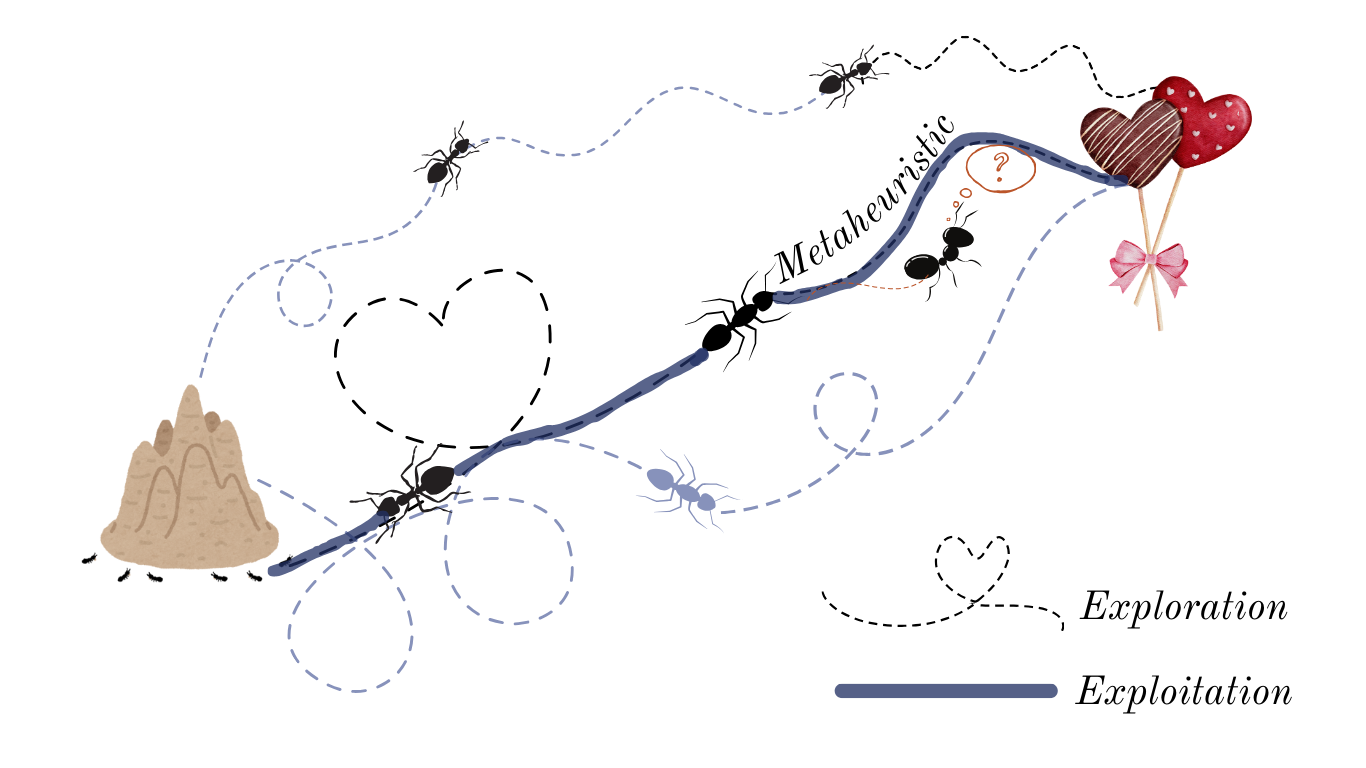
They've found an efficient route, but it's not necessarily the shortest one. Eventually, one curious ant will wander, explore a slightly better way to heart candy, and leave pheromones to guide the rest of the family, who will apply new knowledge and exploit new routes. Deep learning models adapt as this colony to fine-tune predictions to generate more accurate text.
Jellyfish bakes encyclopedias
Consider example. In a large language model, the distance, or relationship between tokens like "ants" → "deposit" → "pheromone" is much smaller than between "jellyfish" → "bakes" → "encyclopedias." The first sequence is more naturally connected, so the model assigns it a higher probability, just as ants reinforce the best path. You can see this also in image generation. I’ve asked DALL-E, an image generation tool, to produce two images with prompts “jellyfish bakes encyclopaedias" and "ants deposit pheromone". It produced beautiful, natural scenes of jellyfish in deep blue waters. This happened becouse jellyfish swimming is a common, well-travelled token path, unlike baking encyclopedias. DALL-E captured the second prompt slightly better and tried to represent the pheromone paths ants create. The GenAI understood this combination better because these tokens appear more frequently together in its training data, creating a strong path. I have also used several other image gen tools with my jellyfish - neither baked me encyclopedias.

Now imagine this scenario: Netflix releases a hit show called 'Jellyfish Bakes Encyclopedias.' It becomes a global phenomenon - topping streaming charts for six months, winning prestigious awards, spawning bestselling books, and dominating media coverage when its star marries into a royal family. Over the next two years, this cultural sensation generates countless articles, social media posts, memes, and spin-off content. When future language models are trained on this period's data, suddenly the phrase 'jellyfish bakes encyclopedias' would have a high probability of appearing together - a perfect example of how these models learn from patterns in their training data, regardless of how unusual the combination might have seemed initially.
Exploit-Explore
Speaking about Exploit-Explore, there is another graceful application that is not directly related to AI but is still powerful. Its innovation context. From the ant family ecosystem standpoint, that curious Ant in the picture, who questioned the most optimal available route, balanced exploration with exploitation. This same principle applies in business – when companies strive to innovate, exploring new possibilities while still exploiting their current competitive advantage.
The same concept works perfectly fine for people. As AI adapts to our world, we are also adapting to AI. It is already changing how we work, think, and create. In this mutual adaptation process, exploiting what already works is valuable while exploring new ways of leveraging AI in our daily lives. For example, instead of just chatting with AI for recipe ideas, take a photo of your fridge contents and ask them to list the products and suggest five simple recipes for dinner. Be that Ant.
So, next time you spot an ant trail in your garden or kitchen, take a moment to observe these tiny engineers at work. What might look like a simple line of insects following each other is a sophisticated optimisation system helping shape our technological future. Those invisible chemical trails they leave behind inspired efficient routing algorithms and how modern AI systems learn, process, and retrieve information. It's a humbling reminder that nature has been quietly offering solutions to complex problems all along - we just needed to learn how to observe and adapt its wisdom.
Today, as I write about how ants work together to find optimal paths through cooperation and peaceful collaboration, I can't help but think about the crucial importance of peace in our world. Writing about these brilliant ants and their path-finding wisdom kept bringing me back to thoughts of my alma mater - the National Technical University of Ukraine "Igor Sikorsky Kyiv Polytechnic Institute", where I studied Computer Modeling at the Faculty of Instrumentation Engineering under the guidance of Associate Professor Serhiy Petrovych Vysloukh, PhD in Technical Sciences. This journey of understanding nature's algorithms continued across borders to Oxford University’s Saïd Business School, where I deepened my exploration of Algorithm Development with JianQiang Hu, PhD in Applied Mathematics.
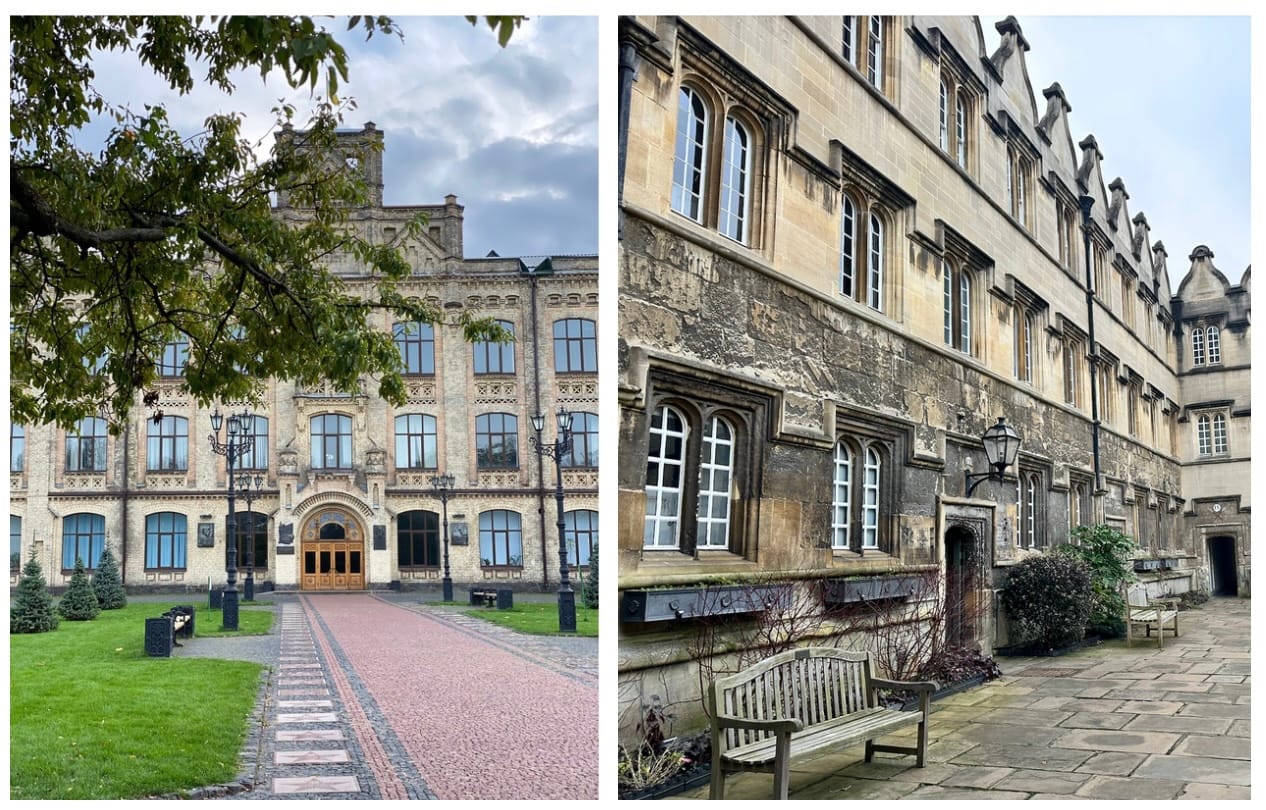
AI Tools Used in This Article
During my studies at Oxford, I work with a vast array of information sources: from academic articles, textbooks, and monographs to specialized curriculum literature, lecture materials, industry reports, analytical reviews, and research publications. In my writing process, I synthesise information from dozens of these diverse sources not only to develop comprehensive analyses, but also to explain complex concepts in a clear and engaging way.
In today's information-rich world, avoiding AI tools out of fear of 'artificiality' means deliberately limiting yourself. I actively integrate AI tools into my daily work, and it helps to boost my efficiency and productivity:
- NotebookLM — for processing research materials and primary sources, helps highlight key points and create thorough reviews;
- Claude (AI from Anthropic), Perplexity.ai, ChatGPT— help me with article structuring, analogies and translation;
- Grammarly Premium — I use it for proofreading;
- DALL-E and Magic Studio — for creating AI-generated images;
- ElevenLabs — for creating audio versions in English using an artificial voice based on my (Vira Larina's) voice.

